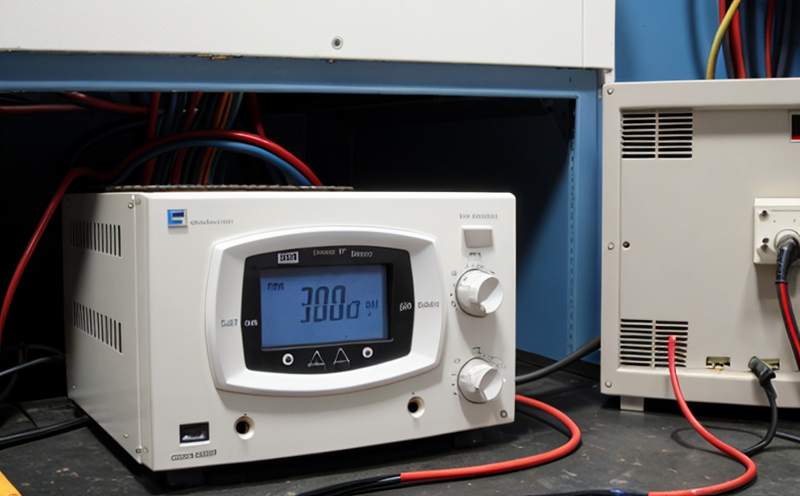IEC 61558 Electrical Testing of Power Transformers for Lighting
IEC 61558-2-20 is a critical standard that specifies the performance, safety, and electromagnetic compatibility (EMC) requirements for power transformers intended for use in lighting applications. This document ensures that products meet international standards, providing assurance of quality, reliability, and safety.
The testing outlined by IEC 61558-2-20 is essential to the development, manufacturing, and certification processes of power transformers used in various lighting systems. It covers a range of tests aimed at verifying that these transformers are capable of performing their intended functions without compromising safety or causing electromagnetic interference.
The primary focus of this standard is on the electrical characteristics of the transformer, including insulation resistance, dielectric strength, and short-circuit withstand capability. These parameters ensure that the transformer can handle the expected load conditions while maintaining high levels of safety for both users and equipment.
Additionally, IEC 61558-2-20 includes requirements for electromagnetic compatibility (EMC), ensuring that transformers do not emit excessive radio interference or susceptibility to external electromagnetic fields. This is crucial in environments where multiple electronic devices are present, such as commercial buildings or industrial facilities.
The testing process involves several key steps, each designed to evaluate a specific aspect of the transformer's performance:
- Insulation Resistance Testing: Ensures that there is sufficient electrical insulation between the windings and the case.
- Dielectric Strength Testing: Verifies that the transformer can withstand high voltage without breaking down or causing a short circuit.
- Short-Circuit Withstand Capability Testing: Simulates real-world conditions to ensure the transformer's ability to handle sudden increases in current without damage.
- EMC Testing: Includes both radiated and conducted emissions tests, ensuring that the transformer does not interfere with other electrical devices or is susceptible to external electromagnetic interference.
The testing procedures are meticulously defined within IEC 61558-2-20, providing clear guidelines for specimen preparation, instrumentation requirements, and acceptance criteria. Compliance with these standards ensures that transformers meet the highest levels of quality and safety, which is critical in lighting applications where reliability and performance are paramount.
By adhering to IEC 61558-2-20, manufacturers can ensure their products meet international standards and gain access to global markets. This standard also helps reduce risks associated with non-compliance, such as product recalls or safety issues, thereby protecting both the manufacturer's reputation and customer satisfaction.
Why It Matters
The importance of IEC 61558-2-20 cannot be overstated in today's competitive market. Compliance with this standard is not only a requirement for selling products internationally but also a key factor in building trust and credibility among customers.
Non-compliance can lead to severe consequences, including product recalls, legal action, and damage to brand reputation. By ensuring that their transformers meet the rigorous requirements of IEC 61558-2-20, manufacturers can avoid these pitfalls and focus on delivering high-quality products that satisfy customer expectations.
In addition to regulatory compliance, meeting these standards also contributes to enhanced product performance and reliability. Consumers are increasingly seeking products that not only meet basic functional requirements but also offer superior quality and safety features. By adhering to IEC 61558-2-20, manufacturers can differentiate their products in the marketplace and gain a competitive advantage.
The standard's emphasis on electromagnetic compatibility (EMC) is particularly relevant in today's interconnected world where devices are often subject to interference from other electronic equipment. By ensuring that transformers do not emit excessive radio interference or susceptibility to external electromagnetic fields, manufacturers can contribute to a more stable and reliable electrical environment.
Industry Applications
| Application | Description |
|---|---|
| Commercial Lighting Systems | Ensures transformers are reliable in large-scale installations where continuous operation is critical. |
| Residential Lighting Installations | Guarantees the safety and performance of transformers used in homes, particularly important for long-term reliability. |
| Indoor and Outdoor Signage | Avoids issues related to transformer failure that could lead to downtime or safety hazards. |
| LED Lighting Solutions | Ensures compatibility with LED drivers, contributing to the longevity of lighting systems. |
| Emergency Lighting | Maintains performance during critical situations where reliability is paramount. |
| Sports Stadiums and Arenas | Aids in maintaining consistent and reliable lighting throughout events, enhancing safety and visibility. |
| Hospital and Healthcare Facilities | Guarantees the continuous operation of essential lighting systems, supporting patient care and staff safety. |
The applications listed above highlight the versatility and importance of IEC 61558-2-20 in various sectors. By adhering to this standard, manufacturers can ensure that their transformers are suitable for a wide range of lighting applications, from small residential setups to large-scale commercial installations.
Customer Impact and Satisfaction
The implementation of IEC 61558-2-20 has a direct positive impact on customers by ensuring the highest standards of quality and safety. When transformers meet these rigorous requirements, customers can expect reliable performance and long-term service life.
Reliability is crucial in lighting applications where continuous operation is essential for various functions such as security, navigation, and emergency response. By ensuring that transformers are up to standard, manufacturers help maintain consistent performance, reducing the risk of unexpected downtime or failures.
The EMC requirements specified by IEC 61558-2-20 also contribute to customer satisfaction by minimizing interference with other electronic devices. This is particularly important in environments where multiple devices operate simultaneously, such as commercial buildings and industrial facilities. By ensuring that transformers do not emit excessive radio interference or are susceptible to external electromagnetic fields, manufacturers can create a more stable and reliable electrical environment.
In addition to reliability and EMC performance, compliance with this standard also enhances the overall quality of lighting systems. Customers who choose products that meet these standards can be confident in their purchase, knowing they have chosen a product that has been thoroughly tested and certified to international standards.





